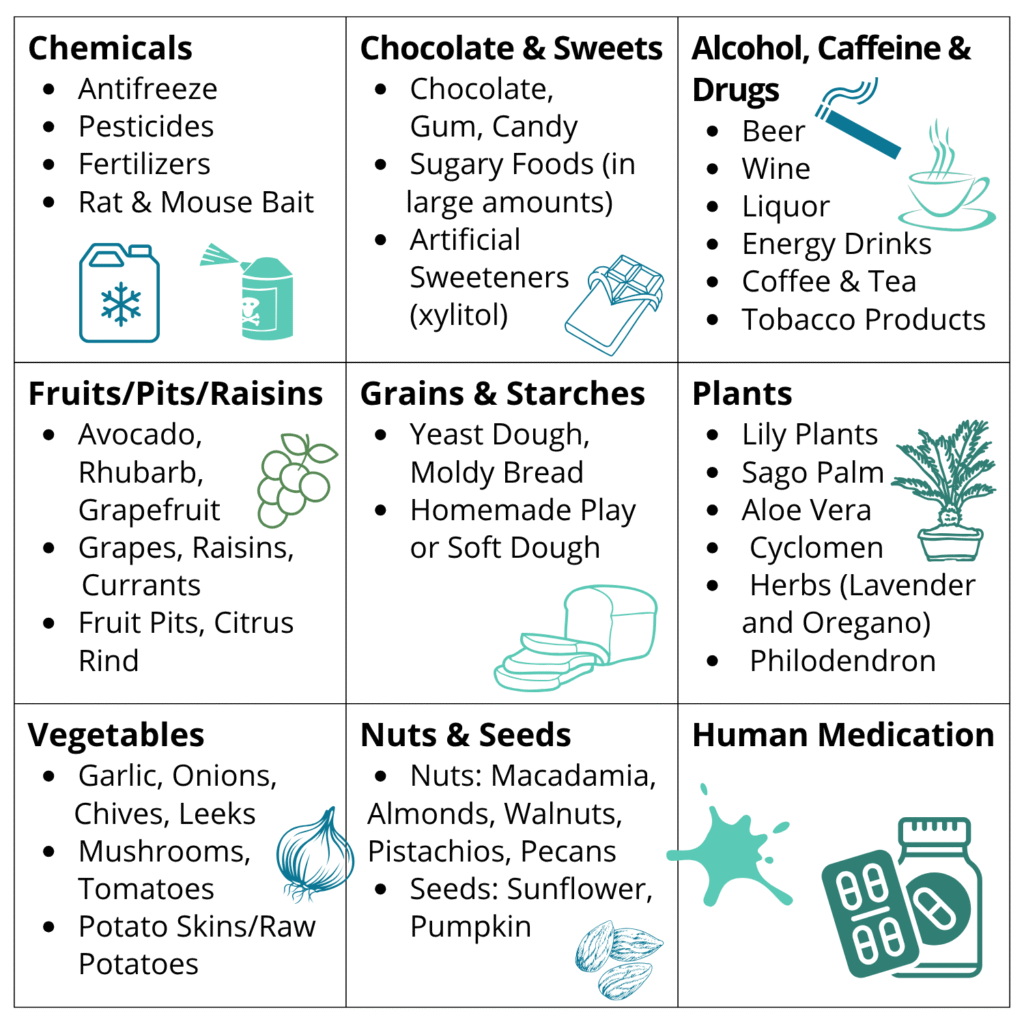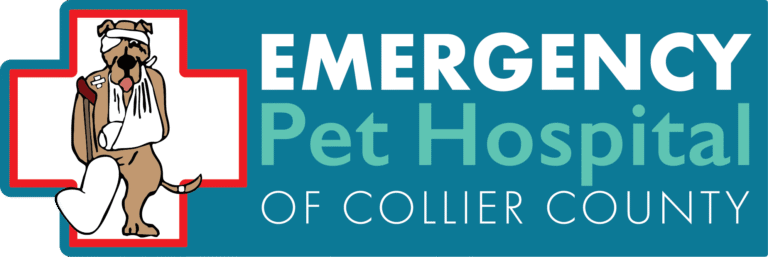Fri: Opens 5pm – Mon 8am
24 hours on weekends and holidays
Fri: Opens 5pm – Mon 8am
24 hours on weekends and holidays
Services
Seek Immediate Medical Care For
- Pain or Difficulty Walking
- Snake Bite
- Seizures
- Excessive or Bloody
- Vomiting or Diarrhea
- Temperature more than 104 degrees or less than 100 degrees; The normal rectal temperature of dogs and cats is 100 to 102 degrees.
- Sudden Severe Abdominal Swelling
- Abnormal Urination or Defecation
- Gum Color Change: White, Yellow, Gray, or Blue
- Breathing Difficulties
- Trauma
- Poisoning
- Heat Stroke
- Lethargy
Radiology (x-rays) is routinely used to provide valuable information about a pet’s bones, gastrointestinal tract (stomach, intestines, colon), respiratory tract (lungs), heart, and genitourinary system (bladder, prostate). It can be used alone or in conjunction with other diagnostic tools to provide a list of possible causes for a pet’s condition, identify the exact cause of a problem or rule out possible problems.
When a pet is being radiographed, an x-ray beam passes through its body and hits a piece of radiographic film. Images on the film appear as various shades of gray and reflect the anatomy of the animal. Bones, which absorb more x-rays, appear as light gray structures. Soft tissues, such as the lungs, absorb fewer x-rays and appear as dark gray structures. Interpretation of radiographs requires great skill on the part of the veterinarian.
Ultrasonography, or ultrasound, is a diagnostic imaging technique similar to radiography (X-rays) and is usually used in conjunction with radiography and other diagnostic measures. It allows visualization of the deep structures of the body.
Ultrasound can be used for a variety of purposes including examination of the animal’s heart, kidneys, liver, gallbladder, bladder etc. It can also be used to determine pregnancy and to monitor an ongoing pregnancy. Ultrasound can detect fluid, cysts, tumors or abscesses.
A ‘transducer’ (a small hand held tool) is applied to the surface of the body to which an ultrasound image is desired. Gel is used to help the transducer slide over the skin surface and create a more accurate visual image.
Sound waves are emitted from the transducer and directed into the body where they are bounced off the various organs to different degrees depending on the density of the tissues and amount of fluid present. The sounds are then fed back through the transducer and are relfected on a viewing monitor. Ultrasound is a painless procedure with no known side effects. It does not involve radiation.
When every minute counts, our in-house laboratory allows us to perform rapid blood analysis without delay. We’re equipped to run a wide range of diagnostic tests, including complete blood counts (CBCs), chemistry panels, electrolytes, clotting profiles, and blood gas analysis. Most results are available within 30 to 60 minutes, and for critical cases, we offer select tests with turnaround times as fast as 1 to 5 minutes—helping us make informed decisions for your pet’s care, right when it matters most.
Anesthesia and patient monitoring varies greatly among clinics. When you choose your veterinarian, be sure to question the types of anesthetics used and the protocols for monitoring anesthesia.
Often the more expensive anesthetics are safer to use; however, anesthetics are also chosen for other reasons including their ability to control pain.
- Local Anesthesia: A local anesthetic causes a loss of sensation to a ‘local’ area. Small surgical or diagnostic procedures may require a local anesthetic to perform. A biopsy is a common diagnostic procedure where local anesthetic can be used to control pain. A biopsy involves surgical removal of a small portion of tissue. Dental nerve blocks are also a common form of local anesthesia and a way of reducing pain and speeding recovery after a dental procedure.
- Tranquilization/Sedation: Tranquilization or sedation is used to calm an animal under various conditions. The animal remains awake or may ‘sleep’ but is easily aroused when stimulated. Pet owners frequently request sedation for their animals during travel, thunderstorms, fireworks, etc. Sedation and tranquilization are not without risk and each animal should be assessed prior to dispensing these medicines.
- General Anesthesia: A general anesthetic results in a loss of consciousness in the animal and a loss of sensation throughout the body. Most general anesthetic procedures involve several steps beginning with the administration of a sedative. An intravenous injection of an anesthetic renders the animal unconscious while a breathing tube is placed into the animal’s trachea. A gas anesthetic is delivered in combination with oxygen to the animal via the breathing tube to maintain the state of unconsciousness.
- Although general anesthetics are significantly safer than they have been in the past, there is still the remote chance of an anesthetic accident. There are many ways to reduce the risk associated with anesthesia including a thorough physical examination and blood work prior to anesthesia. Anesthetic monitoring equipment and protocol can also contribute to a safer anesthesia.
- Patient Monitoring: During general anesthesia, our patients are monitored closely by a registered animal health technician for heart rate and rhythm with electrocardiography, respiratory rate, capillary refill time, peripheral pulses, oxygenation of the blood, and auscultation. Our staff is with your pet the entire time that they are under anesthesia.
Our typical surgeries include c-sections, gastric torsions (bloat), stomach and intestinal foreign body removal, obstructed urinary tract repair, hemorrhaging tumor resection, and a variety of trauma surgeries from minor wounds to severe internal organ damage. In cases of orthopedic injuries, we assess the damage and provide pain control and stabilization as indicated. Your family vet will perform the orthopedic surgeries or refer you to a specialist if warranted.
Safety during a pet’s surgery is our number one priority. We will conduct a thorough pre-anesthesia exam (that typically includes bloodwork) to check for the presence of underlying conditions that could impact your pet’s ability to handle general anesthesia. One of our licensed veterinary technicians will monitor your pet’s vital signs throughout the surgery.
Fluid therapy plays a vital role in supporting many of our hospitalized patients. To ensure the highest level of care, we use advanced electronic fluid pumps that precisely control fluid delivery and immediately alert our team if there’s any disruption in flow. For medications requiring gradual or high-volume administration, we rely on syringe pumps to deliver treatment safely and accurately. This level of precision helps us provide consistent, compassionate care for pets in need of critical support.
During hours we are open we have at least one veterinarian on duty (not just on call!) and a technician staff to monitor and provide nursing care for pets at all hours. If there are significant changes in your pet’s status you may receive a call at any hour. You may call at any time to get an update from one of our staff. If we need to make changes to the treatment plan, if we have abnormal test results to inform you of, or if your pets condition is deteriorating the vet on duty will want to speak to you personally to discuss these issues.
Our monitoring equipment for surgery patients enables us to watch your pet’s EKG/ECG, heartrate, pulse, and body temperature.
When your pet needs help, you want answers fast. We’re proud to offer our pet families the advantages of modern diagnostics and fast results when you need it most.
Supporting Your Pet When Every Breath Counts
When pets experience respiratory distress or oxygen deficiency, timely and effective treatment is critical. At Emergency Pet Hospital of Collier County, we offer oxygen therapy to help stabilize and support pets experiencing breathing difficulties due to illness, injury, or surgery.
What Is Oxygen Therapy?
Oxygen therapy is a medical treatment that delivers concentrated oxygen to pets who are struggling to breathe. It helps improve oxygen levels in the blood, reduces the workload on the heart and lungs, and promotes healing in animals with respiratory or cardiovascular conditions.
This therapy is commonly used for:
Pneumonia or other lung infections
Congestive heart failure
Asthma or bronchitis
Trauma (such as chest injuries)
Anesthesia recovery
Brachycephalic (flat-faced) breed respiratory support
Smoke inhalation or toxin exposure
How Oxygen Therapy Works
Pets receiving oxygen therapy are placed in a specially designed oxygen chamber or given oxygen via a mask or nasal cannula. The delivery method depends on your pet’s condition and how urgently they need support. Our team closely monitors vital signs and oxygen levels throughout treatment to ensure safety and comfort.
Signs Your Pet May Need Oxygen Therapy
If your pet is experiencing any of the following symptoms, immediate veterinary attention is advised:
Labored or rapid breathing
Blue or pale gums
Weakness or collapse
Coughing or wheezing
Open-mouth breathing (especially in cats)
Compassionate, Critical Support
At Emergency Pet Hospital of Collier County, your pet’s well-being is our highest priority. Our trained veterinary team is equipped to provide emergency oxygen therapy and ongoing respiratory support when needed. We work quickly and compassionately to stabilize your pet and develop a treatment plan tailored to their condition.
Never Give Your Pet:

Toxicity can range from mild discomfort to severe poisoning. Consult with your veterinarian if you think your pet has ingested a toxic item, or for more urgent needs, call a pet poison helpline.
Pet Poison Helpline – Call (888) 426-4435
